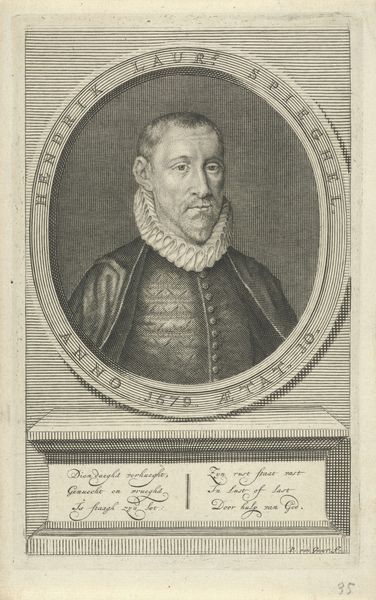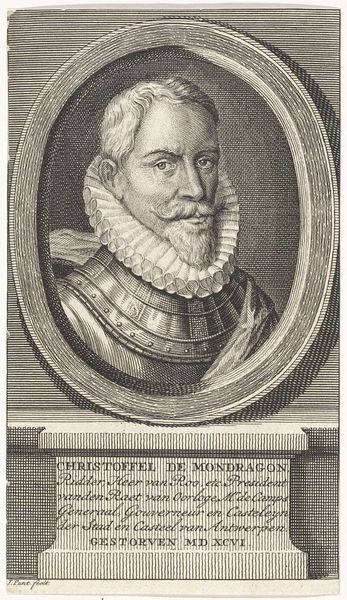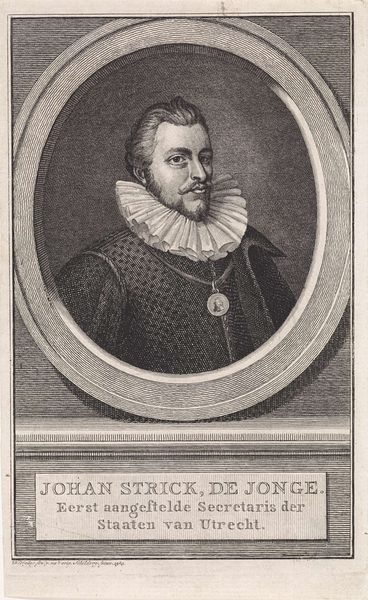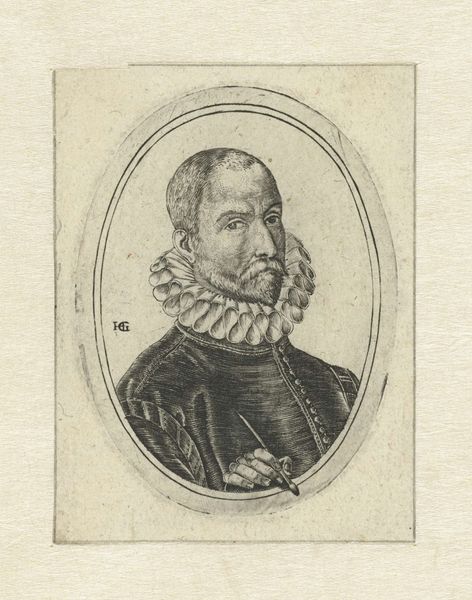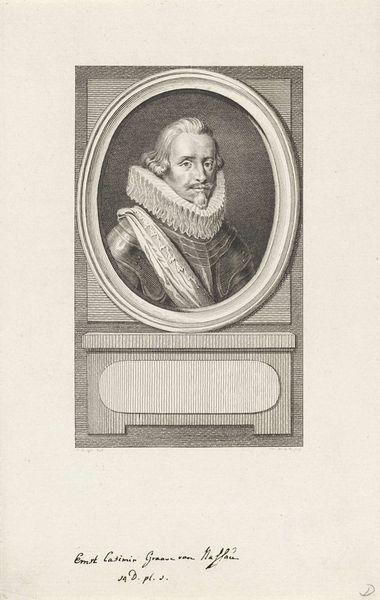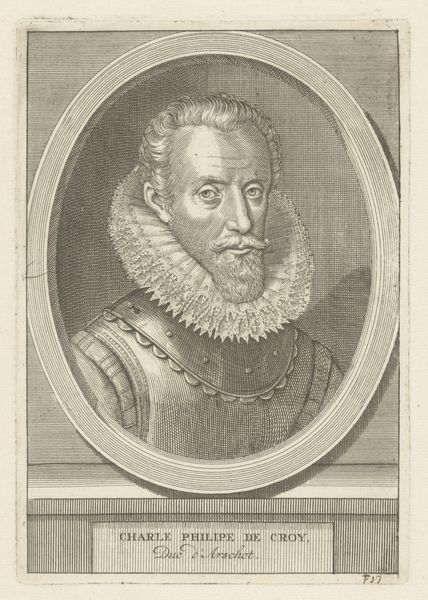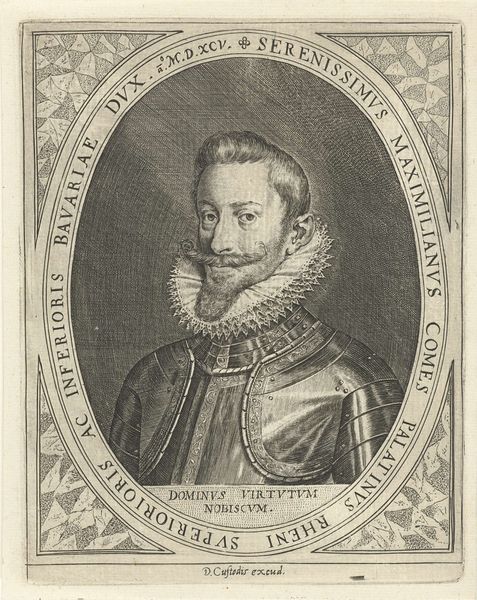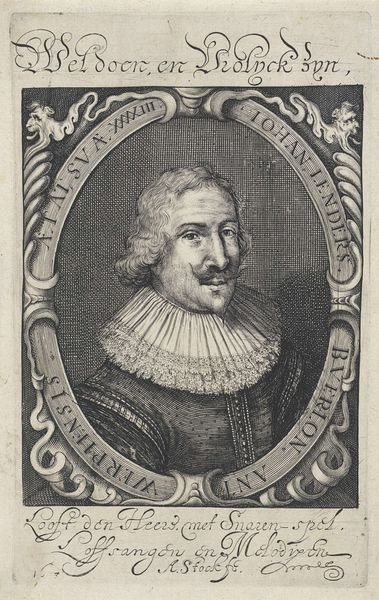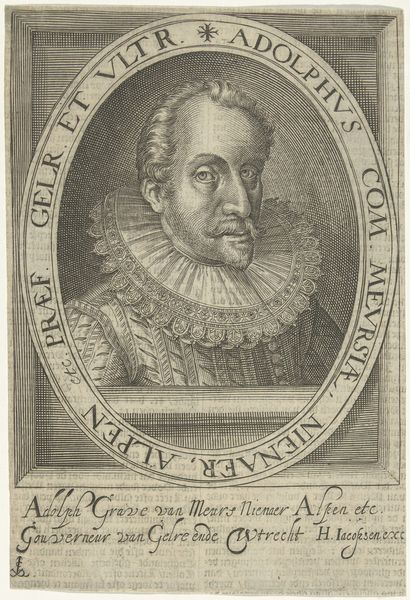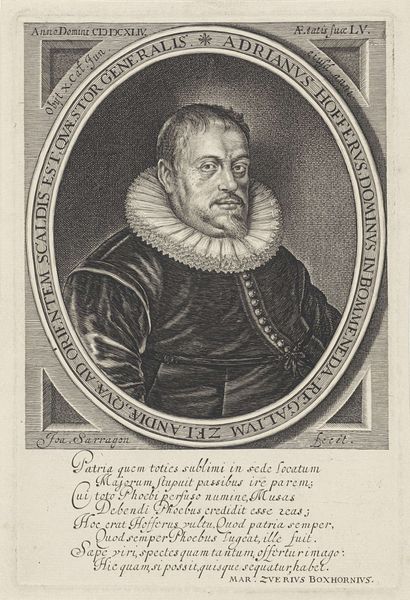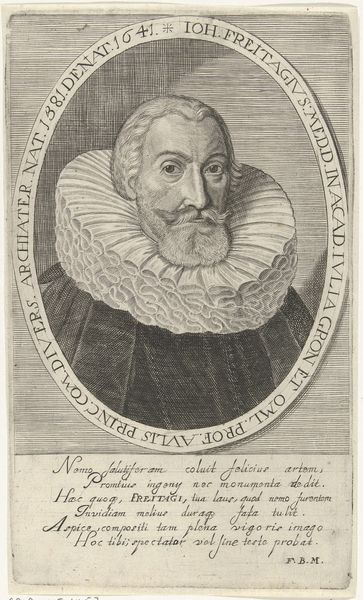
Dimensions: width 102 mm, width 71 mm
Copyright: Rijks Museum: Open Domain
Curator: Looking at this print, created between 1783 and 1795, what strikes you first? Editor: The man's steely gaze, for sure. There’s a real sense of unflinching authority in that portrait. The stark contrasts give it a formidable, almost austere mood. Curator: The print is entitled "Portret van Cristóbal de Mondragón y Otalora," rendered by Reinier Vinkeles. He was a prominent figure, governor of Antwerp and stadtholder of Holland and Zeeland. It offers us insight into the visual culture surrounding power and leadership in that era. Editor: The rendering of the armor is impressive, really emphasizing Mondragon's power and social standing. However, what message are we sending today by showcasing and thereby seemingly valorizing a historical figure who undoubtedly participated in colonial expansion? Curator: Your question is crucial. Artworks like this reflect, reinforce, and are products of particular sociopolitical structures. Seeing this image within the context of the Dutch Golden Age allows us to analyze those power dynamics in an incredibly explicit way. The imagery of weapons in the lower register reinforces military command and success. Editor: The gaze confronts us as the viewer, while the material details speak volumes about the means of power at play in this man’s life and that particular historical moment. In this framework, art can also be used as an explicit vehicle for colonial dominance. Do we want to perpetuate that now by uncritically placing Mondragón’s face on the wall of our museums? Curator: Those ethical considerations should inform all museum work. By situating this portrait within an art-historical conversation, we have a way of speaking to audiences, deconstructing and analyzing. This type of deconstruction helps modern audiences to reflect critically on historical forces and actors. Editor: Yes. Placing this piece in dialogue with our contemporary ethics—and engaging communities—can illuminate blind spots. Hopefully we are building an honest history rather than an exercise of state sanctioned veneration of people like Mondragón. Curator: Precisely, using these pieces as launching points allows us to foster discourse. Editor: An interesting historical artifact, one with implications for today.
Comments
No comments
Be the first to comment and join the conversation on the ultimate creative platform.
